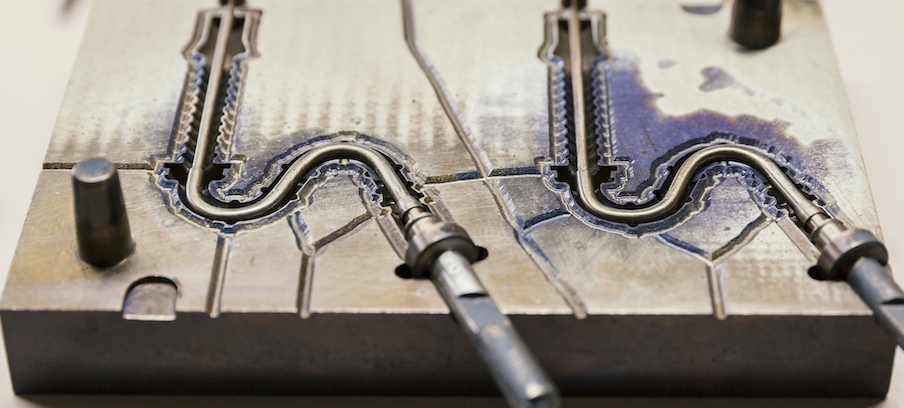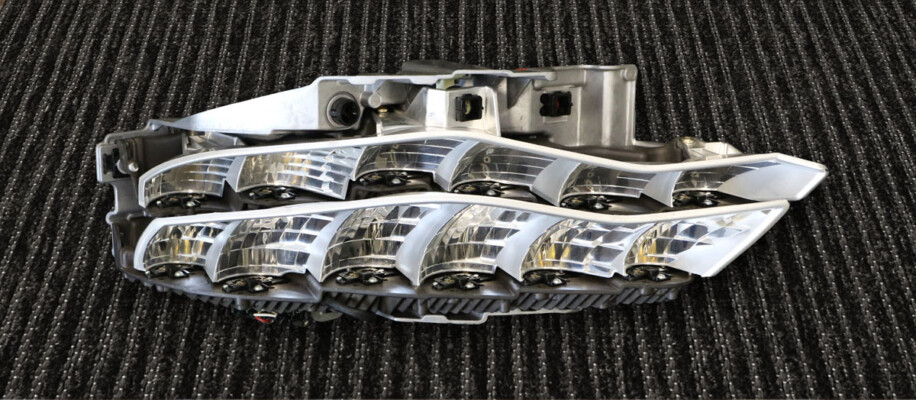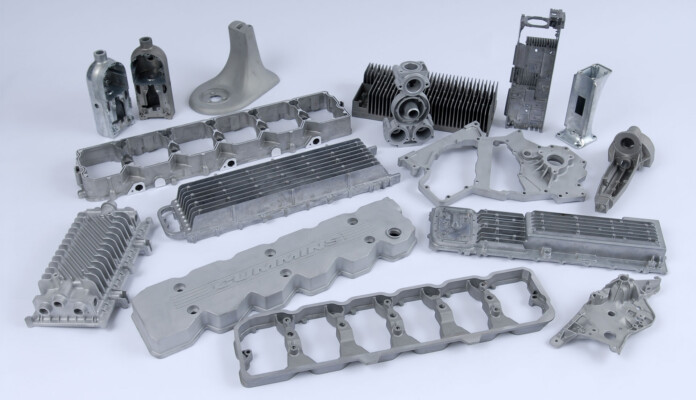What is Santoprene? Santoprene vs. Rubber Injection & Compression Molding for Seals & Gasket Manufacturing

The following article compares rubber (natural and EPDM) and Santoprene on:
- Cost
- Resilience
- Application
What is Santoprene?
Santoprene is not strictly rubber, but it acts like rubber in many applications. The product is a thermoplastic elastomer (TPE) which acts like plastic in its molding characteristics. Santoprene is used to create precise rubber-like products including seals, grips, and other coatings where rubber might otherwise be used.
Santoprene’s Cycle Times as a Cost Factor
One of the largest benefits of using TPEs is a faster cycle time compared to Rubber Molding. Generally, rubber molding produces parts with longer cycle times–largely because of cure times and “blowing-off” the part (using air pressure to release it from the mold). This extra, more manual technique creates a difference in cycle time that can be as extreme as 5 plus minutes. For example, a TPE Santoprene part could take as little as 10 seconds to make, versus up to 6 minutes for a similarly molded rubber part. This difference also reflects the fact that a thermoplastic polymer like Santoprene uses a traditional plastic injection molding process contrasted with a specialty rubber molding machine.
Injection Molded Santoprene’s Weight Characteristics
When weight is a major consideration, for example in the aviation or general transportation industries, TPEs win. Santoprene can provide up to 30% weight reduction over rubber.
Other Benefits of Santoprene vs. Rubber– Recyclability
In addition to those benefits mentioned, Santoprene has the ability to be recycled, so manufacturing Santoprene parts has essentially zero to little waste. Santoprene can also produce more precise and intricate end-products than rubber because of the injection molding process. Rubber can be recycled to a degree, but not as easily and with each cycle becomes less durable. Also, a rubber part cannot be machined after the fact. Therefore rubber parts need carefully inspected to have defects thrown away. Whereas with Santoprene and other by-products of plastic injection molding, the end part can always be machined/modified to meet specifications or specific tolerances. And while that may add more time, that still could be a major cost-saving depending on the part being made.
Insert and Over-molding
Santoprene provides excellent overmolding capabilities for rubber-to-metal bonds, as well as bonding well to engineering thermoplastics like ABS. Because of its ability to be molded into very thin and relatively complex shapes when compared to rubber, Santoprene and other TPEs are typically used for this application.
Disadvantages of Using Santoprene vs. Natural Rubber
Sustainability
Santoprene requires the use of petrochemicals for its production. Although it is able to be recycled, it is not a renewable resource that can be indefinitely manufactured.
Resilience
Rubber is an ideal flexible material for manufacturing hoses, seals, grips and more. Rubber also has great versatility in terms of the environment it is exposed to and therefore can be used in many more applications. Vulcanized rubber stands up well to heat, chemicals, vibration, and friction. On the other hand, Santoprene offers reduced properties at temperature extremes, as well as those with high friction. Santoprene should not be used for seals, gaskets, and other applications that will maintain in contact with solvents like Gasoline, Naptha, Benzene, Chloroform, and others. These are the types of environments however where rubber holds up extremely well. Reference here
Rubber Uses and Advantages
The most common use of natural rubber is in the tire manufacturing industry. Other types of synthetic rubber are widely used in applications like gaskets, seals, breathing apparatuses (like gas masks), and more. Since there are so many different types of rubber formulas – some with lubricity properties (Silicone), and others with resistance to petrochemicals (Nitrile) – these rubber compounds can accommodate most applications without the limitations of TPEs.
Common Types of Rubber and Their Applications
Neoprene – Used for flexibility, fair resistance to petrochemicals, fair abrasion resistance
Viton – Has excellent resistance to acids, petrochemicals, petroleum, and oils, and has fair abrasion resistance and flexibility
Nitrile – Has excellent resistance to petroleum and oils, and fair abrasion and flexibility characteristics
EPDM – Has excellent resistance to hydroxides and other caustic chemicals, has fair flexibility, abrasion resistance, but poor resistance to petrochemicals, petroleum, and oils.
Santoprene vs. Rubber– Volume | Tolerance | Application
Each material has its purpose, and even though the choice between the two may seem clear cut depending on the application, there are three main factors to take into consideration when choosing between the two.
The first is volume. As described above, rubber is a more manual process than injection molding and therefore has a larger cycle time. So even though plastic tooling is generally more expensive than rubber, it doesn’t make sense to create hundreds of thousands of components out of rubber. That type of volume is better for the more automated injection molding process.
Second is tolerances. The more intricate the part, the less ideal it is for rubber molding. On top of that, when rubber molding, there is a constant battle against shrinkage. Adding proper venting and performing other techniques help combat this, but it will always be a consideration when trying to create a specific part with intricate details. Cryogenic deflashing, the process of freezing material to make it brittle enough to break away cleanly, helps out especially with neoprene and urethane rubbers, but again adds to the cycle time. Plastic injection molding, along with the help of an additional tooling step, can help meet tight tolerances and create more intricate components.
The last consideration is the application. Again, as documented above, Santoprene (though advances are being made) won’t hold up to oil and gas, or in extreme hot and cold climates. So even though rubber molding hasn’t changed all that much with new technological additions in the last few decades, the process and the material holds up against newly developed materials and techniques.
PHB’s Rubber Compression Molding & Santoprene Injection Molding Capabilities
PHB is a full-service rubber injection/compression molding manufacturer. In addition to our line of rubber presses, we have extensive plastics injection molding capabilities for Santoprene and other TPE product manufacturing. PHB also manufactures rubber and TPE products that require deflashing, coloring, overmolding, inserts, packaging, and shipping. We are experts in the rubber molding and plastic injection fields, and are happy to help with your material selections!
[/wpv-noautop]





